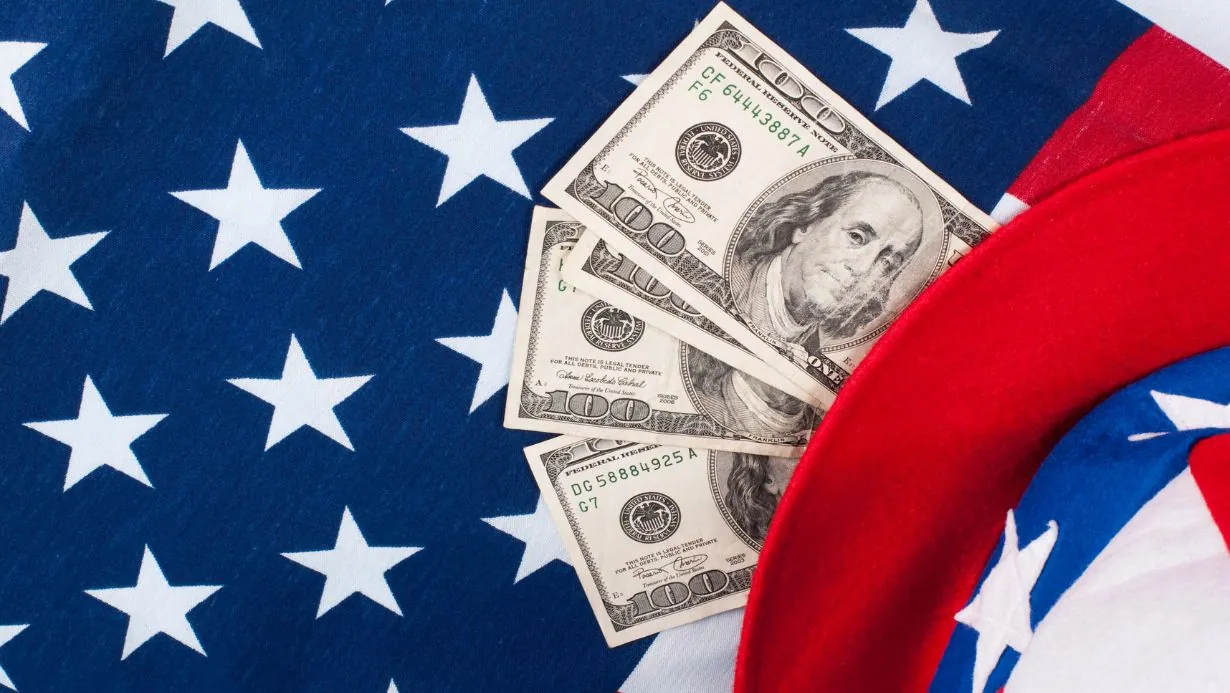Discover the alarming truth behind the US national debt crisis and whether economic growth is enough to overcome the staggering $33 trillion burden.
The Peter G. Peterson Foundation believes the US’s $33 trillion debt crisis mountain is likely to grow even larger – and policymakers and legislators can’t rely on the economy to solve the problem.
According to the nonpartisan research group, the US debt-to-GDP ratio will reach 97% at the end of 2022, indicating a ballooning public debt balance.
The Congressional Budget Office estimates the US will rack up debt equivalent to 107% of GDP by 2029, the highest debt-to-GDP ratio ever recorded.
The nation’s debt-to-GDP ratio reached an all-time record in the years following World War II, reaching 106 percent of GDP in 1946. During the next few decades, that ratio slumped due to a cocktail of favorable market conditions and a post-war economic boom – but researchers say this time it won’t happen.
The United States should not expect to grow out of its debt simply by rapid growth in GDP, according to researchers in a note on Wednesday, given projections for large primary deficits, demographic trends, and Federal Reserve policy focused on controlling inflation. The approaching all-time high debt-to-GDP ratio should wake lawmakers up, and a number of policy solutions are available for the current fiscal and economic environment.
During World War II, primary surpluses in the national budget, as well as the Fed’s ceiling on Treasury and bond yields, kept the government’s borrowing costs artificially low. The US economy was boosted by a boom in economic growth. Although the US economy is expected to grow an eye-popping 5.4% over the third quarter, the government isn’t on track to reduce its budget deficit anytime soon. Lawmakers have yet to agree on a new budget, making a shutdown event in 2023 more likely.
Keeping a close eye on inflation, the Fed has warned that interest rates will remain high for longer. While the 10-year US Treasury yield briefly touched 5% this week, Fed Chair Powell recently said the central bank would let the current bond market volatility play out.
Borrowers, as well as the government, will be adversely affected by this. As interest rates and bond yields rise, US debt servicing costs may become increasingly unsustainable, experts say, with interest expenses on the national debt potentially reaching new records by 2025.
Moreover, the government has a whopping .6 trillion of debt due to mature in the next year – equivalent to 31% of the total debt of the US
Because of mounting fears over US debt, the government may have difficulty finding buyers for Treasury bonds. According to one Columbia Business School professor, the Fed would have to step in to buy US debt securities if Treasury auctions failed, which could lead to inflation.
Also Read:
- Biden, allies announce rail link between India and Europe at G20 summit
- Joe Biden in Delhi Tomorrow for G20 Summit: Unveiling ‘The Beast’ and Unparalleled Security Preparations
- The Debt Supercycle: Unveiling the Culprit Behind China’s Economic Troubles, Harvard Economist Reveals
- Hotels Covid Learnings: Fueling the Upcycle as Demand Continues to Surge
